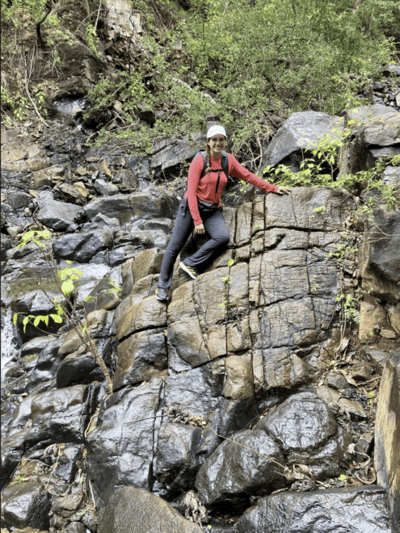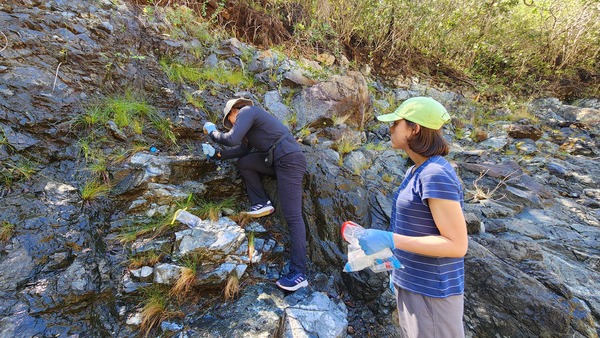Biofilms and the search for life beyond earth
In a study published in Applied and Environmental Microbiology, researchers from Michigan State University explored how some of the planet’s most ancient and resilient life forms, microbial biofilms, survive in extremely harsh environments. These structured communities may hold the key to understanding how life could survive and be detected on other planets.

Sarah Gonzalez, a doctoral student in MSU’s department of microbiology, genetics, & immunology, and Matt Schrenk, an MGI associate professor, are looking at biofilms that grow in hyperalkaline natural springs. These are environments with extremely high pH, higher than 11, where few microorganisms can survive.
Biofilms are layers of microbes that grow and stick to surfaces.
“These biofilms act as a protective layer to the microorganisms that produce them,” said Gonzalez. “So, it is like a shield to protect themselves from the high pH conditions in these environments.”
This study focuses on two key concepts in astrobiology: habitability and biosignatures. Habitability is whether an environment can support life, and biofilms significantly enhance this by providing protection and stability. Biosignatures, on the other hand, are patterns or objects left by living things, which can persist for a very long time.
The work is supported by a NASA exobiology grant as well as a grant from the National Science Foundation.
Gonzalez’s fieldwork took place in rocky area known as the Santa Elena Ophiolite in Costa Rica.
“This is a very interesting environment because it's a Mars analog environment,” she said. “If we study these high pH springs that are being produced in Santa Elena Ophiolite, we can make comparisons to Mars because it's very similar in terms of the mineralogy.”
A natural process called serpentinization happens there, where water reacts with rocks to produce gases such as methane and hydrogen, which can serve as potential energy sources for microorganisms. Scientists believe that this process occurred on Mars, so studying these biofilms could help us understand if life might exist, or ever existed, on the Red Planet.
The team collected samples from various sites in Santa Elena, preserving the biofilms and their surrounding minerals for detailed analysis. They aim to understand the interactions between the biofilms and minerals and whether the microorganisms there use methane as a carbon source.

The main takeaway from the paper is the potential use of biofilms in astrobiology. Even though biofilms are relatively unexplored, researchers believe that they could help scientists find signs of life on other planets. They suggest that biofilms could serve as useful model systems for future planetary exploration missions, including those by NASA, helping scientists better understand where and how to look for signs of life on other worlds.
“This interdisciplinary review accurately conveys the complexities of the biofilm physiology, and how it has enabled microbial life to adapt to diverse and sometimes extreme conditions,” said Schrenk. “Sarah’s work provides a guide as to where we might look for life at its’ limits on Earth as well as other planets and moons, and how we might search for life in these settings in a way that is accessible to microbiologists and space scientists alike.”
“This research is important as it explores how microbial biofilms survive and thrive in some of Earth’s most extreme environments, offering a window into potential life-supporting conditions on other planets,” said Gonzalez. “It will impact my field as it will shape how we search for life beyond Earth and deepen our understanding of life’s adaptability on our own planet.”



